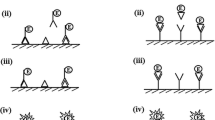Abstract
Using the reverse phase high-performance liquid chromatography (HPLC) with mobile phases composed of simple acids, we have developed an assay technique for the measurement of adrenolutin, one of the oxidation products of catecholamines, in rat plasma. Ion-pairing chromatography permits the separation and quantitation of plasma adrenolutin (μM) in a linear manner. Sample preparation involved the precipitation of plasma proteins with perchloric acid and it is easier to handle a large number of samples at a time. However, we were unable to demonstrate the presence of adrenochrome, another oxidation product of catecholamines, in plasma since adrenochrome was rapidly destroyed in acid as well as in blood and was quickly changed, into adrenolutin. Adrenolutin peak in HPLC was confirmed by 1) the retention time; 2) co-injection of adrenolutin and; 3) the appearance of 3H-adrenolutin after injection of 3H-norepinephrine. Administration of different catecholamines as well as adrenochrome and adrenolutin in rats also increased the level of adrenolutin in plasma. Adrenolutin was found to be present in plasma in other species including dog, rabbit and pig. High level of adrenolutin, which may represent total concentration of aminolutin in plasma, suggests the presence of an efficient mechanism for the oxidation of catecholamines under in vivo conditions.
Similar content being viewed by others
References
Dhalla NS, Ganguly PK, Panagia V, Beamish RE: Catecholamine-induced cardiomyopathy: Alterations in Ca2+ transport systems. In: C. Kawai, W. H. Abelmann, (ed) Pathogenesis of myocarditis and cardiomyopathy. University of Tokyo Press, 1987, pp 135–147
Ferrans VJ, Hibbs RCT, Weily HS, Weilbaecher DG, Walsh JJ, Burch GE: A histochemical and electron microscopic study of epinephrine-induced myocardial necrosis. J Mol Cell Cardiol 1: 11–22, 1970
Rona G, Chappel CI, Balazs T, Gaudry R: An infarct-like myocardial lesion and other toxic manifestations produced by isoproterenol in the rat. Arch Pathol 67: 443–455, 1959
Bhagat B, Sullivan JM, Fischer VW, Nadel EM, Dhalla NS: cAMP activity and isoproteranol induced injury in rats: Recent Advances in Studies in Cardiac Structure and Metabolism, 12:465–470, 1978
Rona G: Catecholamine cardiotoxicity. J Mol Cell Cardiol 17: 291–306, 1985
Dhalla NS, Yates, JC, Lee SL, Singh A: Functional and subcellular changes in the isolated rat heart perfused with oxidized isoproterenol. J Mol Cell Cardiol 10: 31–41, 1978
Yates JC, Dhalla NS: Induction of necrosis and failure in the isolated perfused rat heart with oxidized isoproterenol. J Mol Cell Cardiol 7: 807–816, 1975
Karmazyn M, Beamish RE, Fliegel L, Dhalla NS: Adrenochrome induced coronary artery constriction in the rat heart. J Pharmacol Exp Therep 219: 225–230, 1981
Beamish RE, Dhillon KS, Singal PK, Dhalla NS: Protective effect of sulfinpyrazone against catecholamine metabolite adrenochrome induced arrhythmias. Am Heart J 102: 149–152, 1981
Singal PK, Dhillan KS, Beamish RE, Kapur N, Dhalla NS: Myocardial cell damage and cardiovascular changes due to IV infusion of adrenochrome in rats. Br J Exp Path 63: 167–176, 1982
Yates JC, Beamish RE, Dhalla NS: Ventricular dysfunction and necrosis produced by adrenochrome metabolite of epinephrine: relation to pathogenesis of catecholamine cardiomyopathy. Am Heart J 102: 210–221, 1981
Singal PK, Yates JC, Beamish RE, Dhalla NS: Influence of reducing agents on adenochrome induced changes in the heart. Arch Pathol Lab Med 105: 664–670, 1981
Yates JC, Taam GML, Singal PK, Beamish RE, Dhalla NS: Protection against adrenochrome induced myocardial damage by various pharmacological interventions. Brit J Exp Pathol 81: 242–255, 1980a
Yates JC, Taam GML, Singal PK, Beamish RE, Dhalla NS: Modification of adrenochrome induced cardiac contractile failure and cell damage by changes in cation concentrations. Lab Invest 43: 316–326, 1980b
Matthews SB, Henderson AH, Campbell AK: The adrenochrome pathway: the major route for adrenaline catabolism by polymorphonuclear leucocytes. J Mol Cell Cardiol 17: 339–348, 1985
Heacock RA, Mahon ME: The chemistry of aminochrome. Part II. The preparation, paper chromatography,spectroscopic properties of pure adrenolutin; the infrared spectrum of adrenochrome. Can J Chem 36: 1550–1554, 1958
Mueller RA, Axelrod J: Abnormal cardiac norepinephrine storage in isoproterenol-treated rats. Circ Res 23: 771–778, 1968
Kopin IJ: Catecholamine metabolism: Basic aspects and clinical significance. Pharmacol Rev 37: 333–386, 1985
Axelrod J: Enzymic oxidation of epinephrine to adrenochrome by the salivary gland. Biochim Biophys Acta 85: 247–254, 1964
Green DE, Richter D: Adrenaline and Adrenochrome. Biochem J 31: 596–616, 1937
Mazur A, Green S, Shorr E: The oxidation of adrenaline by ferritin iron and hydrogen peroxide. J Biol Chem 220: 227–235, 1956
Misra HP, Fridovich I: The role of superoxide anion in the autooxidation of epinephrine and a simple assay for superoxide dismutase. J Biol Chem 247: 3170–3175, 1972
Guarnieri C, Ventura C, Georgountzos A, Muscari C, Budini R: Involvement of superoxide radicals on adrenochrome formation stimulated by arachidonic acid in bovine heart sarcolemmal vesicles. Biochim Biophys Acta 838: 355–360, 1985
Author information
Authors and Affiliations
Rights and permissions
About this article
Cite this article
Dhalla, K.S., Ganguly, P.K., Rupp, H. et al. Measurement of adrenolutin as an oxidation product of catecholamines in plasma. Mol Cell Biochem 87, 85–92 (1989). https://doi.org/10.1007/BF00421086
Received:
Accepted:
Issue Date:
DOI: https://doi.org/10.1007/BF00421086




